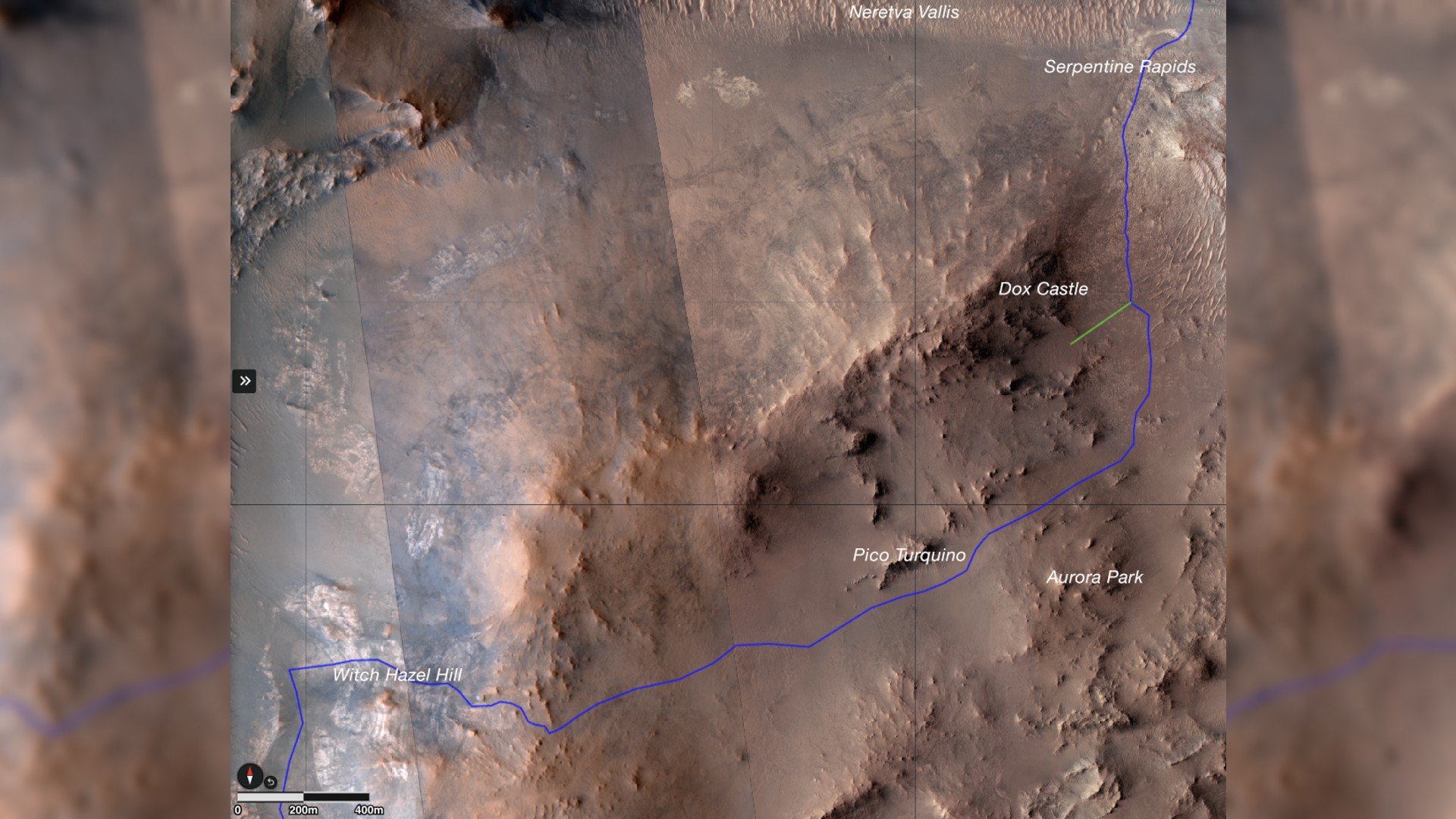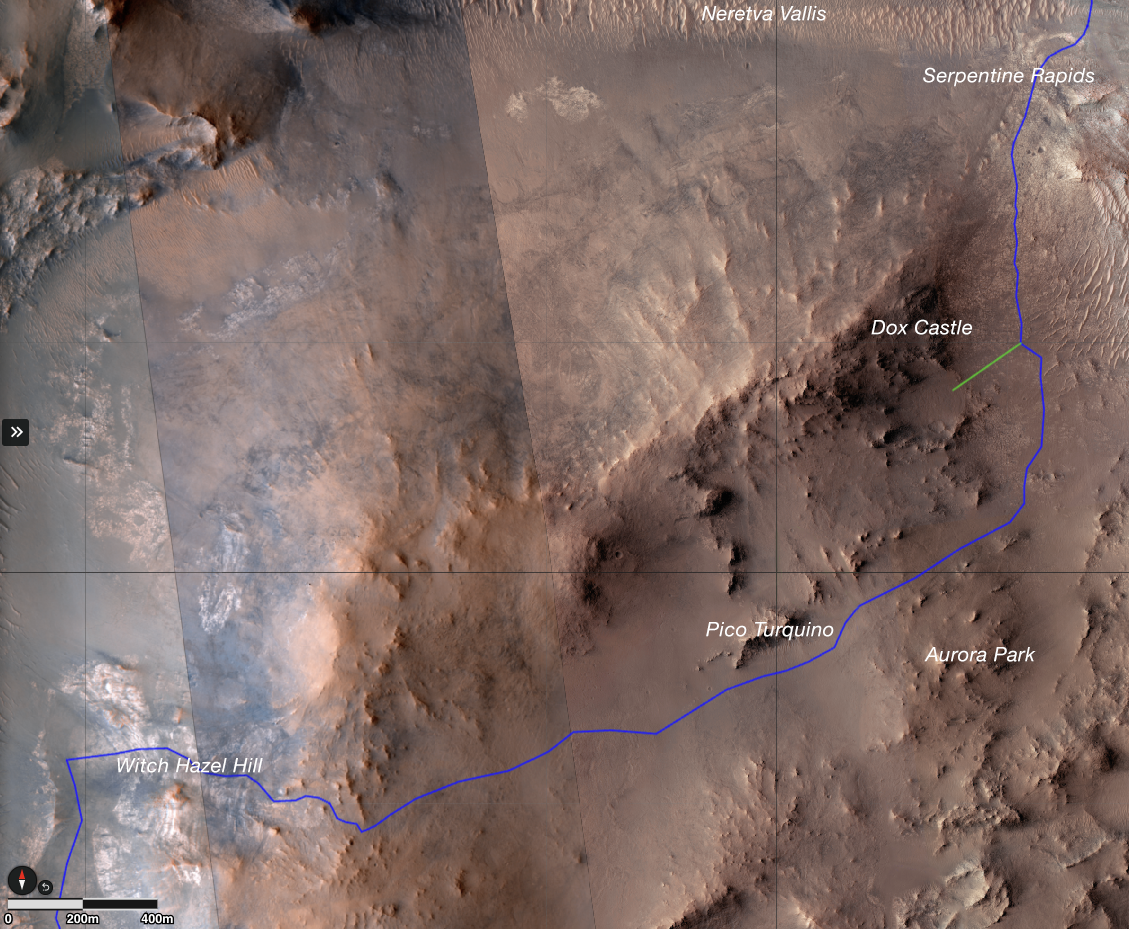Perseverance Mars rover begins 820-foot climb up 'Witch Hazel Hill'

NASA's Perseverance Mars rover is about to begin the next leg of its epic Red Planet journey, and its final destination is likely to be the robotic rover's most spectacular sightseeing spot yet.
Next week, the rover will begin ascending the western rim of Jezero Crater, the dried ancient lakebed where Perseverance began its Martian safari three and a half years ago. Mission scientists are excited about what the car-sized rover might be able to find once it reaches the top.
"As we start the Crater Rim Campaign, our rover is in excellent condition, and the team is raring to see what's on the roof of this place," said Art Thompson, Perseverance’s project manager at NASA’s Jet Propulsion Laboratory, in a statement.
Perseverance's ascent will first take the rover through Pico Turquino, a slope riddled with ground fractures that may be the fingerprints of ancient hydrothermal activity. Next, Perseverance will reach Witch Hazel Hill, a light-colored terrain that makes a dramatic contrast against the typical Martian red in orbital photographs. Perseverance's scientists are hoping they'll be able to take samples at Witch Hazel.
"This is because we expect to investigate rocks from the most ancient crust of Mars," said Eleni Ravanis, a doctoral student at University of Hawaii at Mānoa and a scientist working with Perseverance's Mastcam-Z camera, in the same statement. "These rocks formed from a wealth of different processes, and some represent potentially habitable ancient environments that have never been examined up close before."
Just getting here in the first place was no simple task. Over the past several months, Perseverance had been steadily ascending a channel called Neretva Vallis, which scientists believe to be the desiccated remnants of an ancient Martian river valley.
Long, long ago, water might have streamed down Neretva Vallis, against Perseverance's direction of travel, to fill the lakebed that is now Jezero Crater. That water, if it ever existed, is now long gone. So instead of slogging through a wet landscape, Perseverance spent weeks dodging boulders and clambering across sand dunes.
Breaking space news, the latest updates on rocket launches, skywatching events and more!
Perseverance's travails brought it to a formation named Bright Angel, so named for its striking off-white color. It's so striking, in fact, that Bright Angel may actually be some of the ancient crust that Ravanis mentioned, uncovered by the erosion of Neretva Vallis's long-vanished river.
In the midst of Bright Angel, Perseverance found Cheyava Falls, a curious rock that contains organic compounds and whose face is speckled with leopard-spot-like patches that hold iron and phosphate.
On Earth, the combination of organic compounds and iron-phosphate splotches is a telltale sign of microbes. Astrobiologists are excited to have the opportunity to study these splotches further in their ongoing quest to determine if life ever existed on the Red Planet.
But the splotches on Cheyava Falls are not definitive proof of Martian life. Further samples are necessary. And some of them may await in Witch Hazel, which seems to have the same color as Bright Angel — and may have a very similar origin.

Rahul Rao is a graduate of New York University's SHERP and a freelance science writer, regularly covering physics, space, and infrastructure. His work has appeared in Gizmodo, Popular Science, Inverse, IEEE Spectrum, and Continuum. He enjoys riding trains for fun, and he has seen every surviving episode of Doctor Who. He holds a masters degree in science writing from New York University's Science, Health and Environmental Reporting Program (SHERP) and earned a bachelors degree from Vanderbilt University, where he studied English and physics.

